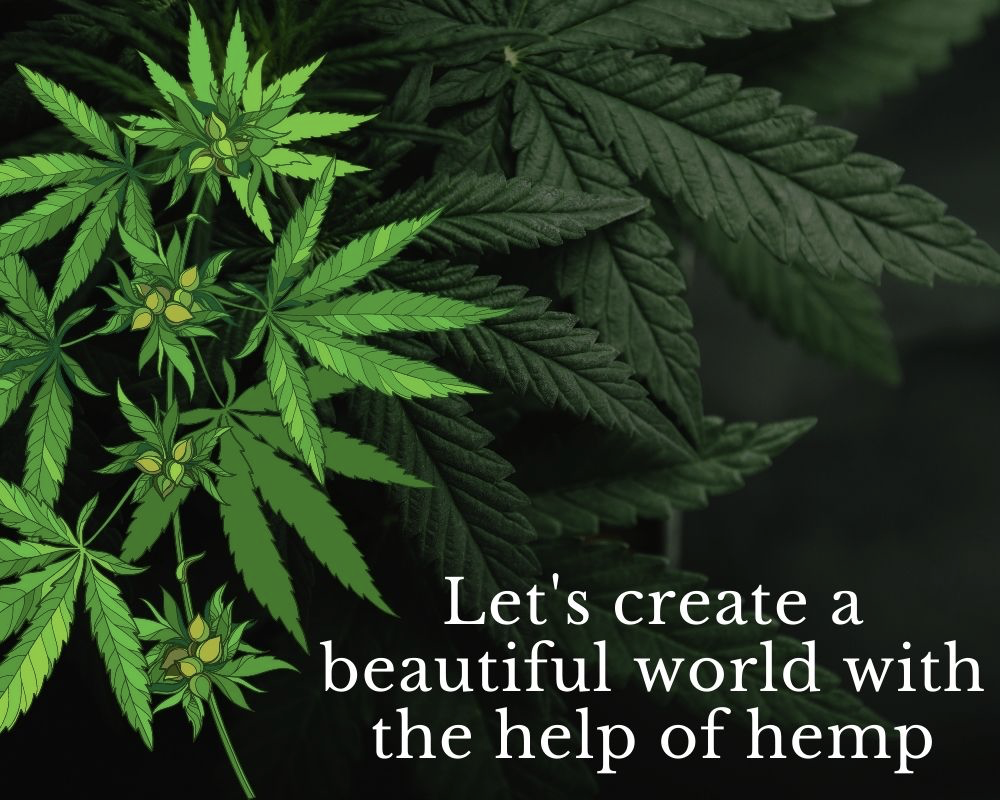
There are tons of beautiful places in this world that you ought to see. Whether you’re a nature enthusiast and revel in outdoor pursuits, you would rather have pleasure in a museum, or you would like to go through the particular atmosphere. Maybe you have felt that impulse to make the world more beautiful? Perhaps you have had trouble determining how to do that?
Sometimes we do not know what we can do to make the world more beautiful. With so many voices telling us exactly what we can do, we’ll find ourselves shy to try out something new! On the other hand, the travel of how we could make the planet more amazing is all about discovery.
Within this guide, we’ll discuss how the hemp plant might help us add more beauty to our world. Researchers throughout the world now believe that over 100 decades, there won’t be any rainforest. But there is hope. While trees take years to rise, hemp can be increased in a couple of weeks. Hemp is good for the whole Earth, and it might only save it.
Keep this planet sustainable with Hemp.
Hemp is just a sort of “bast fiber” meaning that it is one of a number of pure fibers derived from the stems of plants such as flax, jute, and stinging nettle. The hemp fabric has many all-natural advantages like keeping you warm in winter, cool in summer, and even protecting you from UV rays.
An important aspect that hemp farming is all about rotating plants based on this year in order to maintain soil nutrients upward. Because hemp is an annual harvest that develops within just four months of being planted, it’s a perfect candidate for leaves and turning for a fantastic environmental advantage for berry. Farmers across the world rejoice and this implies richer, cleaner soil and a greater crop return.
Conserve water with Hemp and maintain the earth’s blue color
Can you Understand that You need around 2700? Yes, that is a good deal of drinking water! The saddest part is, there are a number of places that make cotton but are now exercising freshwater as of cotton output. In reality, a few of these areas have undergone desertification as well since cotton production.
Hemp production Does not consume a lot of water, unlike cotton. It requires half a quantity of water. Hemp has the amazing power to irrigate itself obviously, which means it requires hardly any water to nurture. This sets berry besides other plant-based milk options like soy or vanilla in addition to other all-natural fiber plants like cotton, which are extremely hungry really.
Thus, it helps in tackling The deficiency of water. It’s a powerful plant that also develops faster than cotton Too. Additionally, hemp can create 200-250 percent more fiber within precisely
Promote Habitat for Wildlife
Paper production in Hemp could eliminate the need to cut countless trees! An incredible number of acres of forests and enormous areas of wildlife habitat can be preserved. Hemp plants could grow tall and fast, in fact up to four meters, which leaves them a great hiding spot for both wildlife and if hemp blossoms blossom, they have been a good pollen source to bees. Birds feast on the insects that live within the bark plants.
Trees have to grow to 20 to 50 years after planting until they can be harvested for industrial use. Within four weeks after It’s implanted, hemp grows 10 to 20 feet tall, and it Is ready for reaping! Hemp could be increased on many farmlands through the locations. Substituting seeds for trees could save woods and wildlife habitats And could expel erosion of topsoil because of logging. Loss of topsoil erosion Would also decrease pollution of lakes/rivers/streams.
Soil Restoration for long life
The stem and leaves of the hemp plant are packed with nutritional benefits. As the plant develops and the seed grows, leaf matter falls to the ground and decomposes, replenishing the soil with goodness prepared for the upcoming crop. And after harvesting, the remnants of this plant can also be returned into the dirt to create a richer yield the subsequent year, making another potent environmental advantage for hemp.
The origins of this hemp plant grow strong and nine feet deep. These root networks may help to keep up the soil together and protect against erosion, which is one of the best problems confronting farmers now. Sometimes, the environmental benefit of hemp is that it’s even restored soil that was already damaged. It is the real thing.
Wear Hemp & Carry Eco-Purifier
Hemp is actually nature’s purifier. The plant rapidly captures carbon dioxide from the atmosphere and leaves what we breathe much cleaner. In reality, for every tonne of berry produced, 1.6 tonnes of carbon is removed from the air (which creates hemp, a much more effective sequester of skin tightening than trees).
While hemp will cheerfully grow in poor soils without an added fertilizers, insecticides or pesticides, and doesn’t need extensive levels of substances or energy to the procedure, but it can sometimes require minimal irrigation. It’s also perhaps not colorfast, therefore unless harsh chemicals can be employed, hemp clothing doesn’t arrive in brilliant colors. However, It’s readily available Un-dyed or in dull tones, frequently using natural dyes.
Of all of the sustainable clothes available on the current market, hemp is the most eco option alternative. Many manufacturers of synthetic clothes work hard to enhance their carbon footprint. But their dependence on substances throughout the production process makes them damaging to these surroundings. Though organic cotton is a lot better for the environment than its own non-toxic counterpart, neither compare environmentally concerning quality, for an instance, hemp.
Author Bio: Abhishek Kishore has over 17 years of experience in the area of social development and sustainability. He has extensively worked for sustainable community development. Mr. Abhishek is also advising various organizations and corporates on sustainable development and helping them align towards UN SDG.
